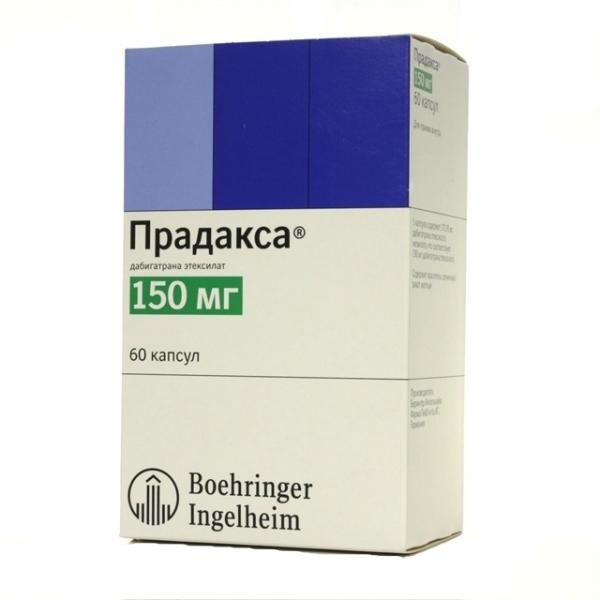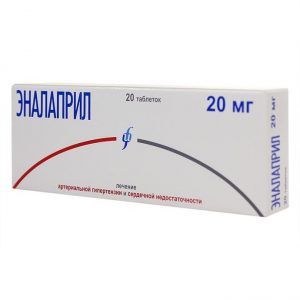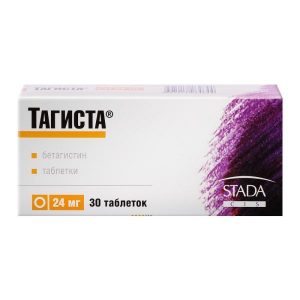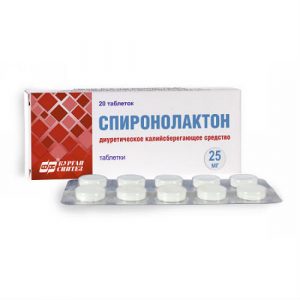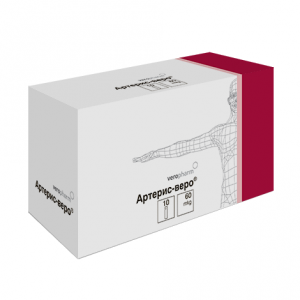Description
Release form
Capsules.
packaging 60 pcs
Pharmacological action
PRADAXA – dabigatran etexilate is a low molecular weight prodrug with no pharmacological activity. After oral administration, it is rapidly absorbed and is converted to dabigatran by hydrolysis catalyzed by esterases. Dabigatran is an active, competitive, reversible direct thrombin inhibitor and has an effect mainly in plasma.
Since thrombin (serine protease) converts fibrinogen into fibrin during the coagulation cascade, inhibition of its activity prevents the formation of a thrombus. Dabigatran inhibits free thrombin, fibrin-binding thrombin and thrombin-induced platelet aggregation.
In vivo and ex vivo in animal studies using various models of thrombosis demonstrated the antithrombotic efficacy and anticoagulant activity of dabigatran after intravenous administration and dabigatran etexilate after oral administration.
A close correlation was found between the concentration of dabigatran in plasma and the severity of the anticoagulant effect. Dabigatran lengthens activated partial thromboplastin time (APTT).
Indications
Prevention of venous thromboembolism in patients after orthopedic surgery.
Contraindications
Known hypersensitivity to dabigatran or dabigatran etexilate or to one of the excipients.
Patients with severe renal failure (creatinine clearance less than 30 ml / min).
Hemorrhagic disorders, patients with hemorrhagic diathesis, patients with spontaneous or pharmacologically induced hemostasis.
Active clinically significant bleeding.
Dysfunction of the liver and liver disease that may affect survival.
Concurrent administration of quinidine.
Organ damage due to clinically significant bleeding, including hemorrhagic stroke, within the previous 6 months before starting therapy.
Patients are under 18 years old.
Special instructions
Risk of developing hemorrhages: Unfractionated heparin can be used to maintain the functioning of a central venous or arterial catheter.
Should not be used simultaneously with PRADAXAВ®:
unfractionated heparins or its derivatives, low molecular weight heparins, sodium fondaparinux, desirudin, thrombolytic agents, GPIIb / IIIa receptor antagonists, clopidogrel, ticlopidine, dextran K. and sphindrape В® in doses recommended for the treatment of deep vein thrombosis and acetylsalicylic acid in doses of 75-320 mg increases the risk of bleeding. Data indicating an increased risk of bleeding associated with dabigatran when taking PRADAXВ® in the recommended dose for patients, receiving small doses of acetylsalicylic acid in order to prevent cardiovascular disease, are absent. However, the available information is limited, therefore, with the combined use of low dose acetylsalicylic acid and PRADAXAВ®, it is necessary to monitor the condition of patients with the goal of
timely diagnosis of bleeding.
Careful monitoring (for symptoms of bleeding or anemia) should be carried out in cases where it is possible to increase the risk of hemorrhagic complications:
– A recent biopsy or trauma.
– The use of drugs that increase the risk of hemorrhagic complications. The combination of PRADAXAВ® with drugs that affect hemostasis or coagulation processes.
– Bacterial endocarditis
Short-term administration of NSAIDs when used together with PRADAXAВ® for analgesia after surgery does not increase the risk of bleeding. Limited data are available on the systematic administration of NSAIDs with a half-life of less than 12 hours in combination with PRADAXAВ®, there is no evidence of an increased risk of bleeding.
Renal failure: pharmacokinetic studies have shown that in patients with decreased renal function, including age-related, an increase in the effectiveness of the drug was noted. In patients with moderately reduced renal function (creatinine clearance of 50-30 ml / min), it is recommended to reduce the daily dose to 150 mg per day.
PRADAXAВ® is contraindicated in patients with severe impaired renal function (creatinine clearance Spinal anesthesia / Epidural anesthesia / Lumbar puncture: In the case of traumatic or repeated spinal puncture and prolonged use of the epidural catheter, the risk of developing spinal bleeding or an epidural should be increased. take no earlier than 2 hours after removal of the catheter. Such patients should be observed in order to identify possible neurological symptoms mov
Effects on ability to drive mechanisms
The effects of dabigatran etexilate on the ability to drive vehicles and management mechanisms have not been studied
Composition
1 caps. choline alfoscerate 400 mg
Excipients:
purified water – 109 mg
povidone (Plasdon C15 or collidone 17PF) – 1 mg
macrogol (polyethylene glycol 400) – until the capsule is weighed 640 mg 0.2 g
Excipients:
lactose monohydrate (milk sugar) – 0.14 g,
modified corn starch – 0.095 g,
microcrystalline cellulose – 0.064 g,
magnesium stearate – 0.001 g. mesylate 172.95 mg, respectively. the content of dabigatran etexilate 150 mg
Excipients:
acacia gum – 8.86 mg,
tartaric acid (coarse) – 44.28 mg,
tartaric acid (powder) – 59.05 mg,
tartaric acid (crystalline) – 73.81 mg,
hypromellose – 4.46 mg,
dimethicone – 0.08 mg,
talcum – 34.31 mg,
hyprolysis (hydroxypropyl cellulose) – 34.59 mg.
Capsule shell composition:
carrageenan (E407) – 0.285 mg,
potassium chloride – 0.4 mg,
titanium dioxide (E171) – 5.4 mg,
indigo carmine (E132) – 0.054 mg,
dye sunny sunset yellow (E110) – 0.00 mg,
hypromellose (hydroxypropyl methylcellulose) – 79.35 mg,
purified water – 4.5 mg.
Composition of black ink Colorcon S-1-27797:
shellac 52.5%,
butanol 6.55%,
ethanol denatured (methylated alcohol) 0.65%,
dye iron oxide black (E172) 33.77%,
isopropanol 3.34 %,
purified water 1.94%.
Dosage and Administration
Inside. During meals or on an empty stomach, washed down with water.
Special instructions for removing capsules from the blister
Remove the capsules from the blister, peeling the foil. Do not squeeze capsules through the foil. Remove the foil so that it is convenient to remove the capsules.
Adults
Prevention of venous thromboembolism (BT) in patients after orthopedic surgery
The recommended dose is 220 mg once daily (2 capsules, 110 mg each).
Side effects
Disorders from the hematopoietic and lymphatic systems: anemia, thrombocytopenia.
Immune system disorders: hypersensitivity reactions, including urticaria, rash and itching, bronchospasm.
Disorders of the nervous system: intracranial bleeding.
Vascular disorders: hematoma, bleeding.
Disorders of the respiratory system, chest and mediastinum: nosebleeds, hemoptysis.
Gastrointestinal disorders: gastrointestinal bleeding, rectal bleeding, hemorrhoidal bleeding, abdominal pain, diarrhea, dyspepsia, nausea, ulceration of the gastrointestinal mucosa, gastroesophagitis, gastroesophageal reflux disease, vomiting, dysphagia.
Disorders from the hepatobiliary system: increased activity of “hepatic” transaminases, impaired liver function, hyperbilirubinemia.
Changes in the skin and subcutaneous tissue: skin hemorrhagic syndrome.
Musculoskeletal disorders, disorders of the connective tissue and bones: hemarthrosis.
Changes in the kidneys and urinary tract: urogenital bleeding, hematuria.
General disorders and changes in the injection site: bleeding from the injection site, bleeding from the injection site of the catheter.
Damage, toxicity and complications from procedures: post-traumatic hematoma, bleeding from the site of surgical access.
Vascular disorders: bleeding from an operating wound.
General disorders and disorders at the injection site: spotting.
Damage, toxicity and complications of postoperative treatment: hematoma after wound treatment, bleeding after wound treatment, anemia in the postoperative period, discharge from the wound after procedures, secretion from the wound.
Surgical and therapeutic procedures: wound drainage, drainage after wound treatment.
When bleeding occurs, the drug is discontinued. Symptomatic treatment is shown. There is no specific antidote.
Given the major route of excretion of dabigatran (kidneys), it is recommended to ensure adequate diuresis. Surgical hemostasis and filling of the volume of circulating blood (BCC) are performed. The use of fresh whole blood or transfusion of fresh frozen plasma is possible. Because dabigatran has a low ability to bind to plasma proteins, the drug may be excreted in hemodialysis, however, clinical experience with the use of dialysis in these situations is limited (see section “Pharmacokinetics”).
When overdosing on PRADAX, concentrates of activated prothrombin complex or recombinant factor VIIa or concentrates of factor II, IX or X may be used. There is experimental evidence to support the effectiveness of these agents in counteracting the anticoagulant effect of dabigatran, however, no specific clinical studies have been conducted.
In the case of the development of thrombocytopenia, or with the use of long-acting anti-aggregates, the question of the use of platelet mass may be considered.
Storage conditions
Store in a dry place, at a temperature not exceeding 25 C.
Shelf life
3 years.
Deystvuyushtee substance
dabigatran эteksilat
Conditions of dispatch from
pharmacies Prescription of
dosage form
capsules
Appointment
Appointment
Adults doctor’s prescription
Beringer Ingelheim, Austria
